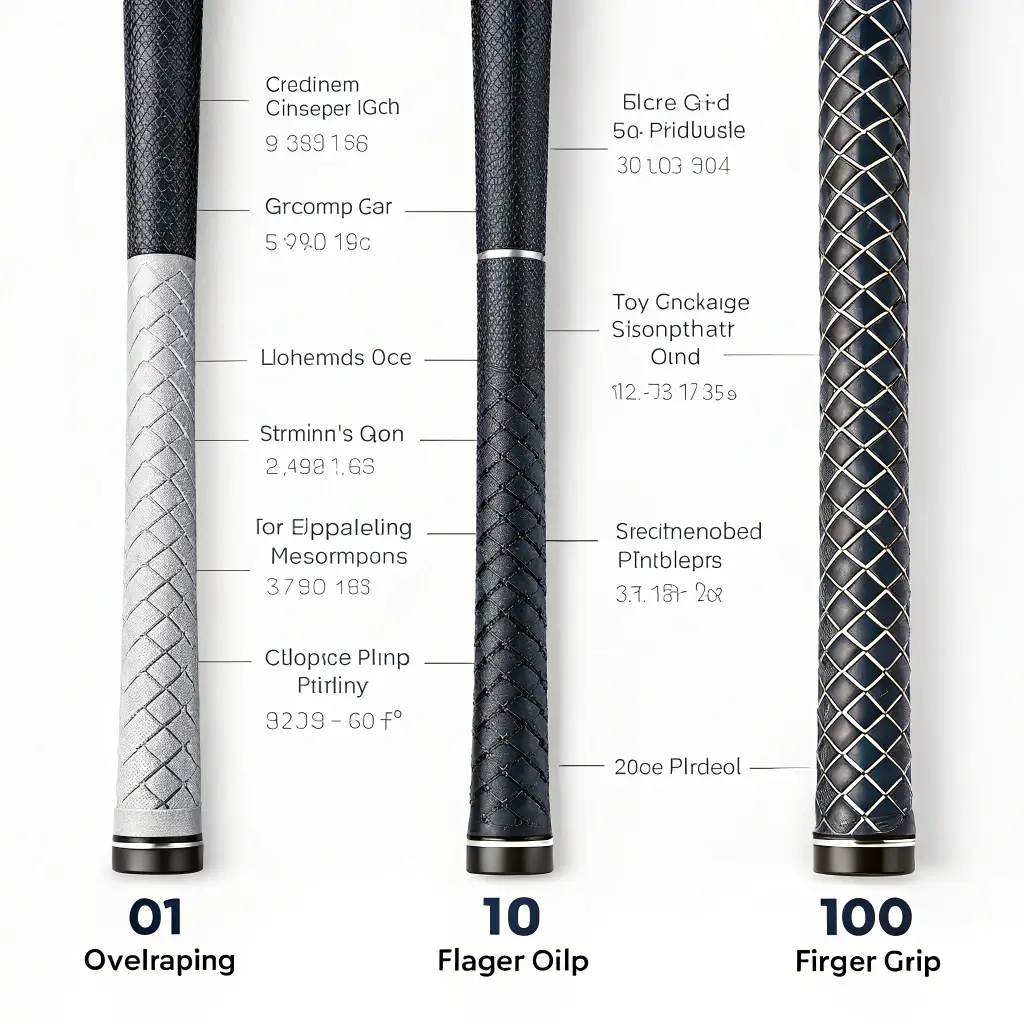Golf grip are essential for every golfer, influencing performance and comfort. A proper grip can enhance your swing, improve accuracy, and boost confidence on the course.
- What is a Golf Grip?
- Definition and Importance
- Types of Golf, Grips
- Factors to Consider
- Grip Size and Material
- The Basics of Grip Technique
- Common Mistakes to Avoid
- Cleaning and Care
- When to Replace Your Grip
- Types of Golf,Grips
- Choosing the Best Golf, Grips
- Determining Golf Grip Size
- Golf Grip Techniques
- Grip Maintenance for Optimal Performance
- Impact of Grip on Golf Performance

What is a Golf Grip?
A golf grip is the part of the club that players hold. It plays a crucial role in controlling the club during swings. The right grip can significantly affect your overall golf performance.
Definition and Importance
The golf grip is the interface between the player and the club. It affects grip pressure, swing mechanics, and shot consistency. A well-fitted grip can lead to better control and improved scores.
Types of Golf, Grips
There are several types of golf grips, including:
- Rubber grips: Common and versatile.
- Leather grips: Premium feel and durability.
- Wrap grips: Soft and comfortable.
- Textured grips: Enhanced traction for better control.
Choosing the best golf, grips depends on personal preference, playing style, and grip size. Experimenting with different types can help you find the perfect fit for your game.
How to Choose the Right Golf Grip
Choosing the right golf grip is crucial for improving your game. A proper grip can enhance your control, comfort, and overall performance on the course. Here are key factors to consider when selecting the best golf, grips for your clubs.
Factors to Consider
1. Playing Style: Understand your swing type and how grip affects it.
2. Weather Conditions: Consider grips that perform well in wet or humid conditions.
3. Personal Preference: Choose a grip that feels comfortable in your hands.
4. Skill Level: Beginners may prefer softer grips for better feel, while advanced players might opt for firmer grips for control.
Grip Size and Material
1. Grip Size: Measure your hand size to determine the right grip size. Standard, midsize, and oversize options are available.
2. Material: Rubber grips offer good traction, while corded grips provide extra durability and moisture control.
3. Texture: Choose a texture that enhances your grip pressure without causing discomfort.
4. Weight: Lighter grips can improve swing speed, while heavier grips may offer more stability.

How to Properly Grip a Golf Club
A proper golf grip is essential for improving your golf performance. It influences your swing, accuracy, and overall game. Understanding the right techniques can help you achieve better results on the course.
The Basics of Grip Technique
1. Choose the right golf grip size for your hands. 2. Position your left hand (for right-handed golfers) on the club with the thumb pointing down. 3. Place your right hand below the left, ensuring the palms face each other. 4. Use a neutral grip, where the club rests diagonally across your fingers. 5. Maintain consistent grip pressure—firm but not too tight. 6. Practice different golf grip types, such as overlapping or interlocking grips, to find what feels best.
Common Mistakes to Avoid
1. Holding the club too tightly can hinder your golf swing. 2. Incorrect grip size can lead to poor control. 3. Overlooking grip maintenance can affect performance. 4. Neglecting to adjust grip pressure during different shots. 5. Failing to practice grip techniques regularly can limit improvement.
Maintaining Your Golf Grip
Proper maintenance of your golf grip is essential for optimal performance on the course. A well-maintained grip enhances your control and consistency, directly impacting your golf swing.
Cleaning and Care
Regular cleaning of your golf club grip is crucial. Use warm, soapy water and a soft brush to remove dirt and oils. Rinse thoroughly and let them air dry. Avoid harsh chemicals that can degrade the material.
Consider using grip-specific cleaners for deeper cleaning. Wipe down grips after each round to maintain tackiness. Store clubs in a cool, dry place to prevent deterioration.
When to Replace Your Grip
Replace your golf grip when you notice wear, such as cracks or a slick surface. A good rule of thumb is to change grips every 40 rounds or once a year, whichever comes first.
Pay attention to your grip size; if it feels uncomfortable or affects your swing, it may be time for a change. Regularly assess grip performance to ensure optimal golf performance.

Frequently Asked Questions
Understanding golf, grips is essential for improving your game. Here are some common questions that golfers often ask.
For beginners, a standard rubber grip is often recommended. It provides a good balance of comfort and control. Look for grips that are soft yet durable. Oversized grips can help reduce tension and improve grip pressure. Consider trying different types to find what feels best.
It’s advisable to change your golf, grips every 40 rounds or at least once a year. Signs of wear include slickness, cracks, or loss of tackiness. Regular grip maintenance can enhance your golf performance and ensure better control during your swing.
Understanding the Importance of Golf Grip
The golf grip is a fundamental aspect of your game. It influences your swing, control, and overall performance. A proper grip can enhance your accuracy and distance. Choosing the right golf club grip is essential for every golfer, regardless of skill level.
Types of Golf,Grips
There are several golf grip types to consider:
- Standard Grip
- Oversized Grip
- Undersized Grip
- Interlocking Grip
- Overlap Grip
Choosing the Best Golf, Grips
When selecting the best golf grips, consider the following:
- Material: Rubber, cord, or a combination
- Texture: Smooth or textured for better traction
- Size: Match your golf grip size to your hand size
Determining Golf Grip Size
Golf grip size is crucial for comfort and control. Measure your hand size to find the right fit:
- Small: Less than 7 inches
- Medium: 7 to 8.5 inches
- Large: Over 8.5 inches
Golf Grip Techniques
Mastering golf grip techniques can improve your game:
- Maintain consistent grip pressure
- Use the correct grip style for your swing
- Practice regularly to develop muscle memory
Grip Maintenance for Optimal Performance
Proper grip maintenance is vital:
- Clean grips regularly to remove dirt and oils
- Inspect for wear and replace when necessary
- Store clubs in a cool, dry place
Impact of Grip on Golf Performance
A well-maintained grip can significantly impact your golf performance:
- Improves swing consistency
- Enhances shot accuracy
- Increases overall confidence on the course
